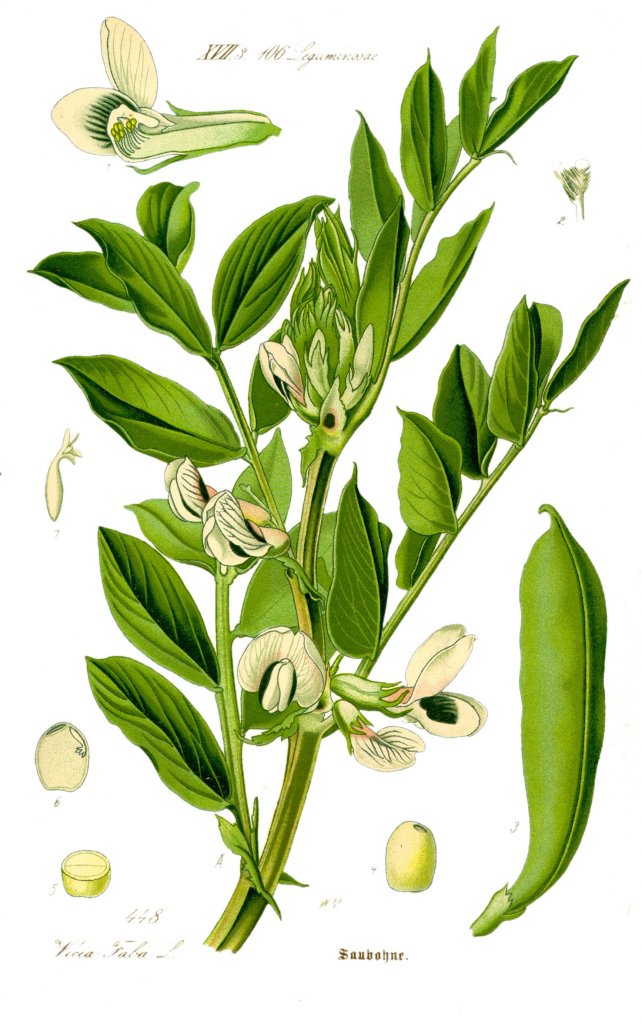
Pigeon bean is a cool weather perennial grown as an annual and member of the pea family, Fabaceae, that also includes lupines, mimosa, and black locust. Is is one of three varieties of fava bean: broad bean (Vicia faba major), horse bean (Vicia faba var. equina), and pigeon bean (Vicia faba var. minor). Faba bean is native to an unidentified part of the eastern Mediterranean area where it has been grown and consumed since 6000 BC or earlier. Carbonized plant remains of pigeon bean have been found in the soil of the area around Pompeii from the time of the eruption of Vesuvius in 79 AD. Photo Credit Wikipedia
The plants of Vicia faba grow 1.5-6′ tall and have 2-4 stems that are square in cross-section. The pinnate gray-green leaves are 4-10″ long and have 2- 7 leaflets. The summer-blooming flowers are very fragrant and have 5 petals, 2 white standard petals, 2 white wing petals with a black spot, and a white keel petal. The fruit is a leathery pod that is green maturing to dark blackish brown, has a downy surface and contains 3-8 round to oval seeds. The seeds of pigeon bean are smaller than those of either broad bean or horse bean and together with horse bean have a stronger taste than broad bean. Pigeon bean and horse bean are usually grown for fodder and as cover crops while broad bean is more popular for human consumption.
Size: 1.5-6′ H
Light: Full sun
Soil: Average to lean, medium moist, well-drained; nitrogen fixing; tolerates saline and clay soils
USDA Hardiness Zones: 9-12 but usually grown as an annual